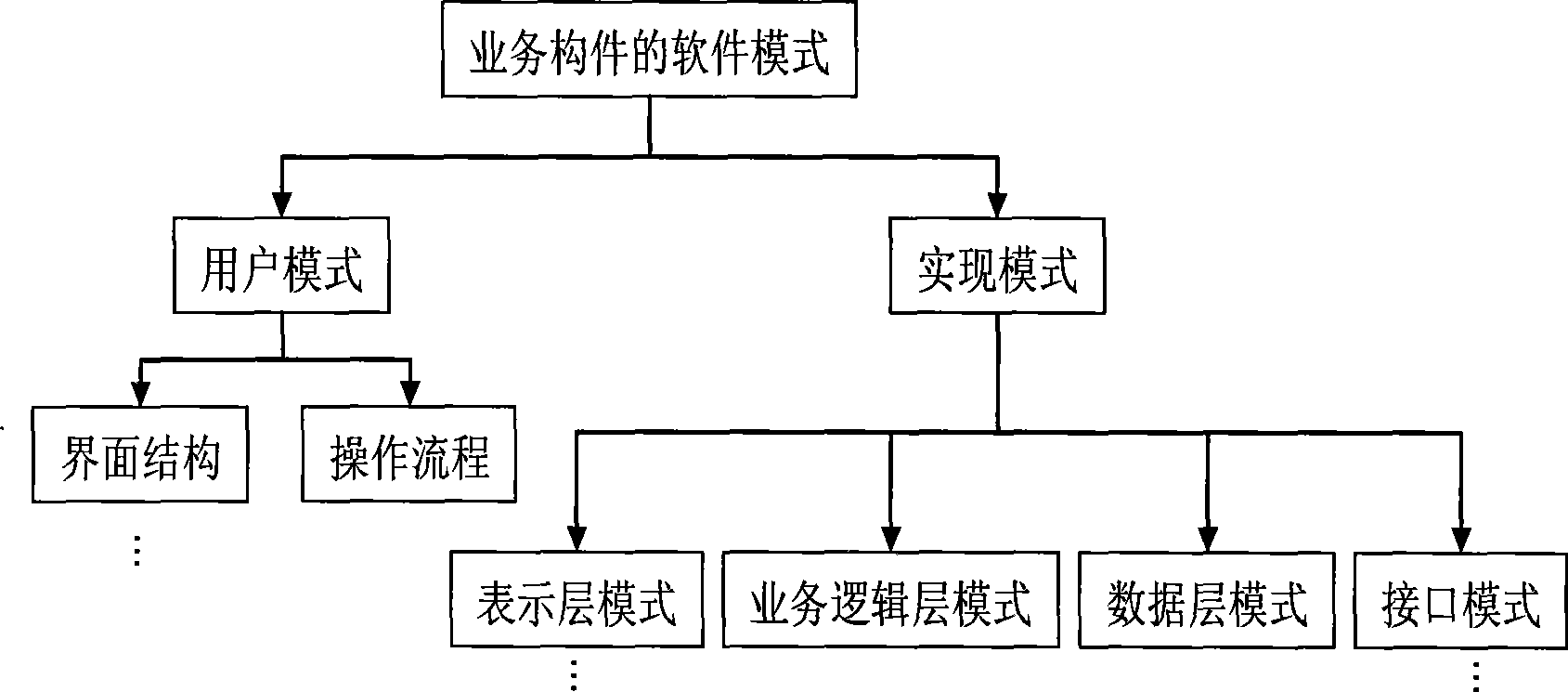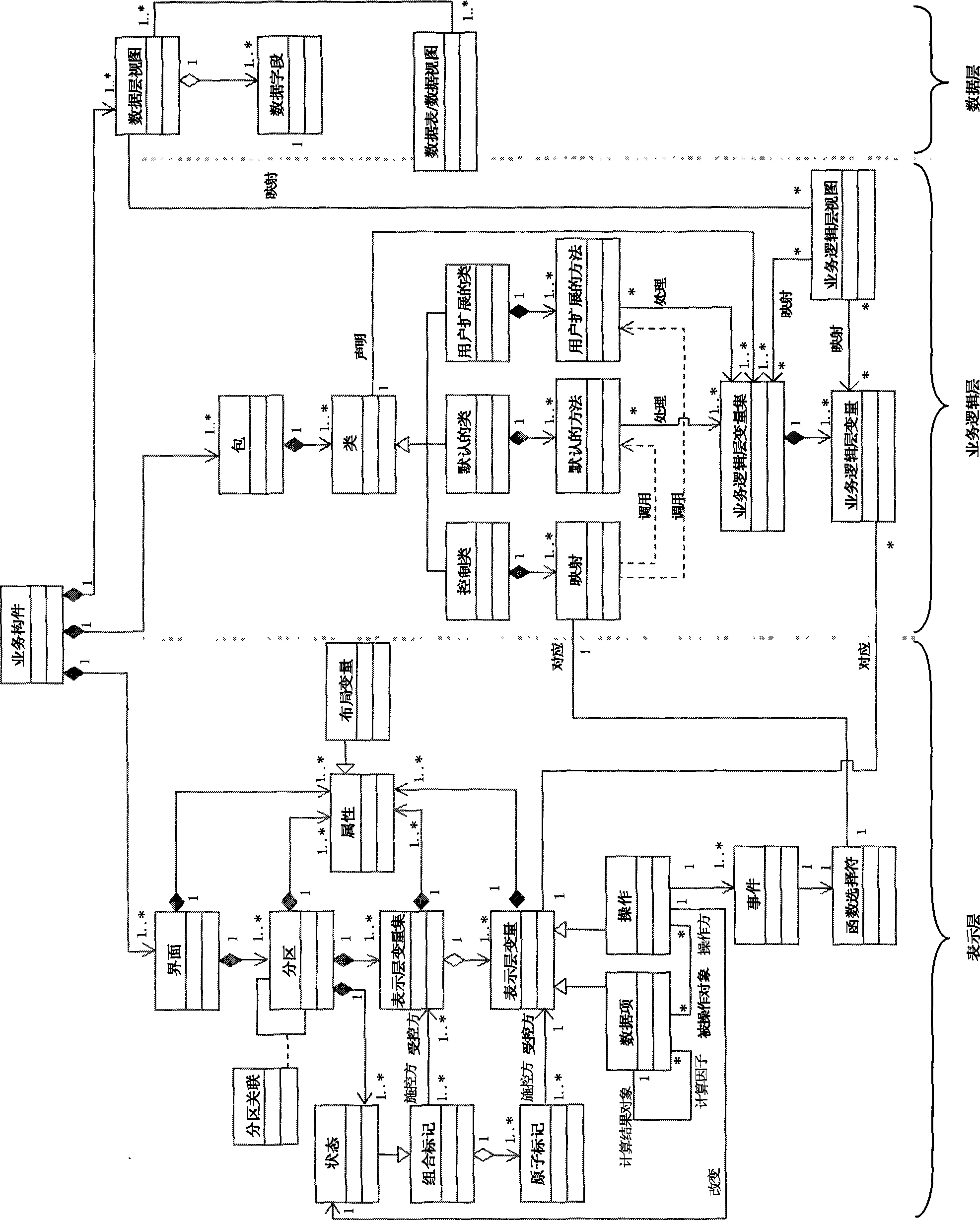Platform-related model of large-granularity components and method of automatic code generation thereof
A platform-related model and automatic generation technology, applied in the information field, can solve the problems that users are difficult to change the structure and style, the generation tools are difficult to use widely, and the scalability and integration are poor, so as to achieve efficient and rapid component development and reuse. Effect
- Summary
- Abstract
- Description
- Claims
- Application Information
AI Technical Summary
Problems solved by technology
Method used
Image
Examples
specific Embodiment approach 1
[0009] Specific implementation mode one: the following combination figure 1 This embodiment will be specifically described. This embodiment is realized by the following steps: 1. Abstract the typical software patterns of several business components from the existing multiple software with the same business content, and obtain the non-instantiated component text based on the pattern; 2. 1. Modeling stage: Select the software model from the typical software models of multiple business components obtained in step 1, so as to obtain the platform-related model of the business component; 3. Development stage: Automatically generate the platform-related model of the business component as a dry business Component program; 4. Deployment stage: Instantiate the dry business component into a reused business component program for specific requirements, thereby generating the final source program code; reuse the business component in the final software system to dynamically adapt to the ent...
specific Embodiment approach 2
[0017] Specific implementation mode two: the following combination figure 2 This embodiment will be specifically described. The difference between this embodiment and Embodiment 1 is that the relevant model of the business component platform obtained in step 2 uses a source-level schema description language to define the user model and implementation model of the business component on the J2EE platform, and the schema description language is universal , can be applied to a variety of software patterns that can be realized by high-level programming languages. The expression methods include:
[0018] i. The software pattern classification method, which divides the software pattern into two categories: user-oriented user pattern (User Pattern, UP) and software-oriented realization pattern (Realization Pattern, RP). The user mode is reflected in the interaction style between software and client users, and the implementation mode is an implementation scheme or operating mechanis...
specific Embodiment approach 3
[0024] Specific implementation mode three: the following combination image 3 This embodiment will be specifically described. The difference between this embodiment and embodiment one is: the business component platform-related model obtained in step 2 is expressed by the following method: this method is a business component PSM model expression method based on the J2EE platform (well known in the art) , the method includes the following steps:
[0025] i. Taking the Brown model (well known in the art) as the layered architecture model of the business component, it is determined that the component is composed of several kinds of small-grained components and the assembly of connectors. The medium-grained components of each level are interconnected by external connectors, and each level is assembled into medium-grained components by internal connectors.
[0026] ii. Based on the above determined architecture, select a series of relevant software sub-patterns and assembl...
PUM
 Login to View More
Login to View More Abstract
Description
Claims
Application Information
 Login to View More
Login to View More - R&D
- Intellectual Property
- Life Sciences
- Materials
- Tech Scout
- Unparalleled Data Quality
- Higher Quality Content
- 60% Fewer Hallucinations
Browse by: Latest US Patents, China's latest patents, Technical Efficacy Thesaurus, Application Domain, Technology Topic, Popular Technical Reports.
© 2025 PatSnap. All rights reserved.Legal|Privacy policy|Modern Slavery Act Transparency Statement|Sitemap|About US| Contact US: help@patsnap.com



